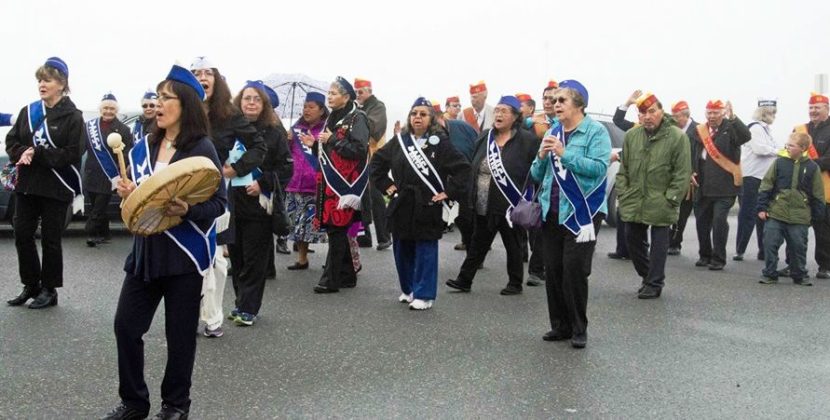
Alaska’s oldest Native organizations are working to attract younger members.
That, subsistence and other issues are on the table at the Alaska Native Brotherhood and Sisterhood’s Grand Camp Convention Oct. 5-8 in Juneau.
The Grand Camp Convention attracts 80 to 100 delegates and members from local chapters, also called camps.
Most are from Southeast, but camps are also in Washington, Oregon and Southcentral Alaska.
ANB and ANS Camp 70 in Juneau host this year’s event.
ANB chapter President Marcelo Quinto said the convention sets the regional, or Grand Camp’s, agendas.
“We are a civil rights organization, but we concentrate on our Native people both in Southeast and we try to assist whenever we can with the rest of our brothers and sisters throughout the state,” he said.
The Alaska Native Brotherhood and Sisterhood are each more than a hundred years old. And in recent decades, many of their programs have been taken over by tribal governments, Native corporations and other organizations.
That means the organizations are smaller than they once were. And their membership is older.
But ANB Grand Camp President Sasha Soboleff said that’s starting to change.
“The youth wave is coming and so we dedicated last year’s convention and this year’s convention to having a focused effort on the young people and how this organization can best respond with their leadership,” he said.

One is Yakutat youth leader Devlin Anderstrom, who will deliver the keynote address.
And Soboleff said in the past year, he’s installed 19 sets of local camp officers who were in their mid-20s or early 30s.
Convention delegates spend the four-day event hearing reports from other Native organizations.
They include the Southeast Alaska Regional Health Consortium, the Central Council of Tlingit and Haida Indian Tribes of Alaska, and the Sealaska regional Native corporation.
They also elect officers and debate and vote on resolutions.
“We come together and talk over all of the ways the local camps are being affected by subsistence, by the economic decline that’s happening, by the impact of what (fisheries) have been going on in terms of subsistence and whether the commercialized part is doing any good, and putting the land that we occupy, whether or not it can be put into trust,” he said.
The Brotherhood and Sisterhood are also considering changes to their constitution.
They address membership, committee structure and other issues. One would create a new, joint executive committee with equal numbers of ANB and ANS members.
Quinto said the camps are trying to modernize.
“We are taking a look at our constitution this year to determine if it needs to be revised so it’s appropriate for this day and age,” he said.
Despite the names, the organizations don’t restrict their membership by race.
Soboleff said many camps have members who are not Alaska Natives.
“So there are lots of people who are welcome to come and who are actually active in our local camps and feel welcome to come down and witness and participate and see how this slice of the world works,” he said.
The convention also includes a culture night and a memorial service.
